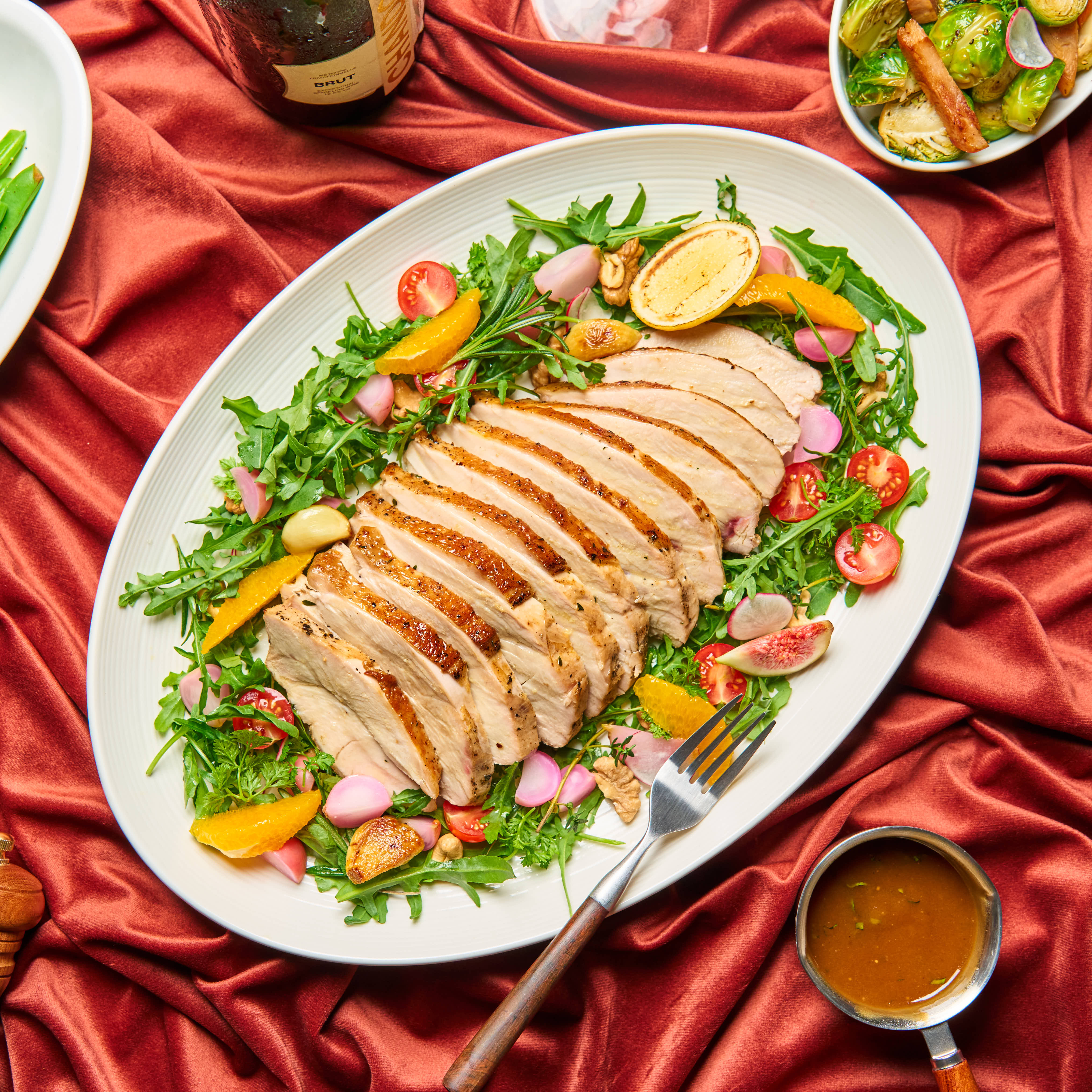A perfect Thanksgiving turkey should be golden-brown with crispy skin that cracks a bit as you slice in, revealing the juiciest, most flavorful meat.
But honestly—why do people stress so much over their Thanksgiving turkey? It doesn’t have to be complicated! The secret to a perfect turkey lies in controlling its temperature. And that’s where we come in.
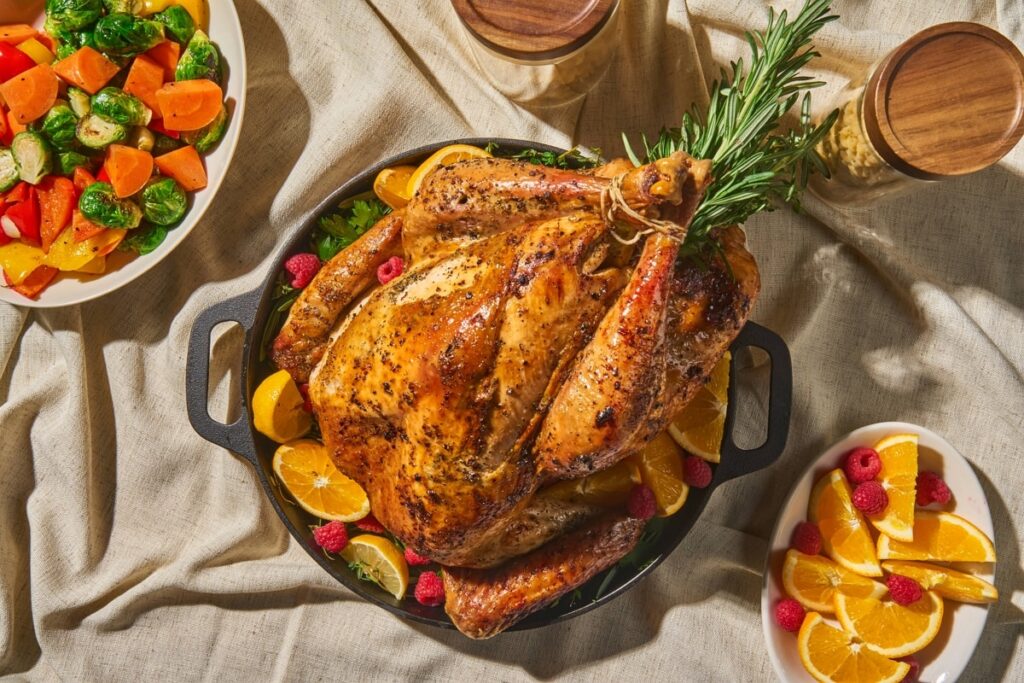
How to Cook a Turkey at a Glance:
Thawing: Thaw in the fridge (24 hours per 5-6 lbs). For more safe thawing mthod: USDA guideline.
Season: Rub with oil or butter, salt, pepper, and herbs (under the skin too for max flavor).
Preheat oven: Set to 355℉ for a slow, even cook.
Roast: Place turkey breast-side up. Use the Typhur Sync Gold smart wireless meat thermometer to monitor temperature.
Target temperature: Roast until the breast hits 156°F (151°F to pull out).
Rest: Let rest 20-30 minutes to lock in juices.
Carve & Serve: Slice, plate, and enjoy!
Tip: A reliable smart wireless meat thermometer is your secret weapon for a stress-free Thanksgiving turkey!
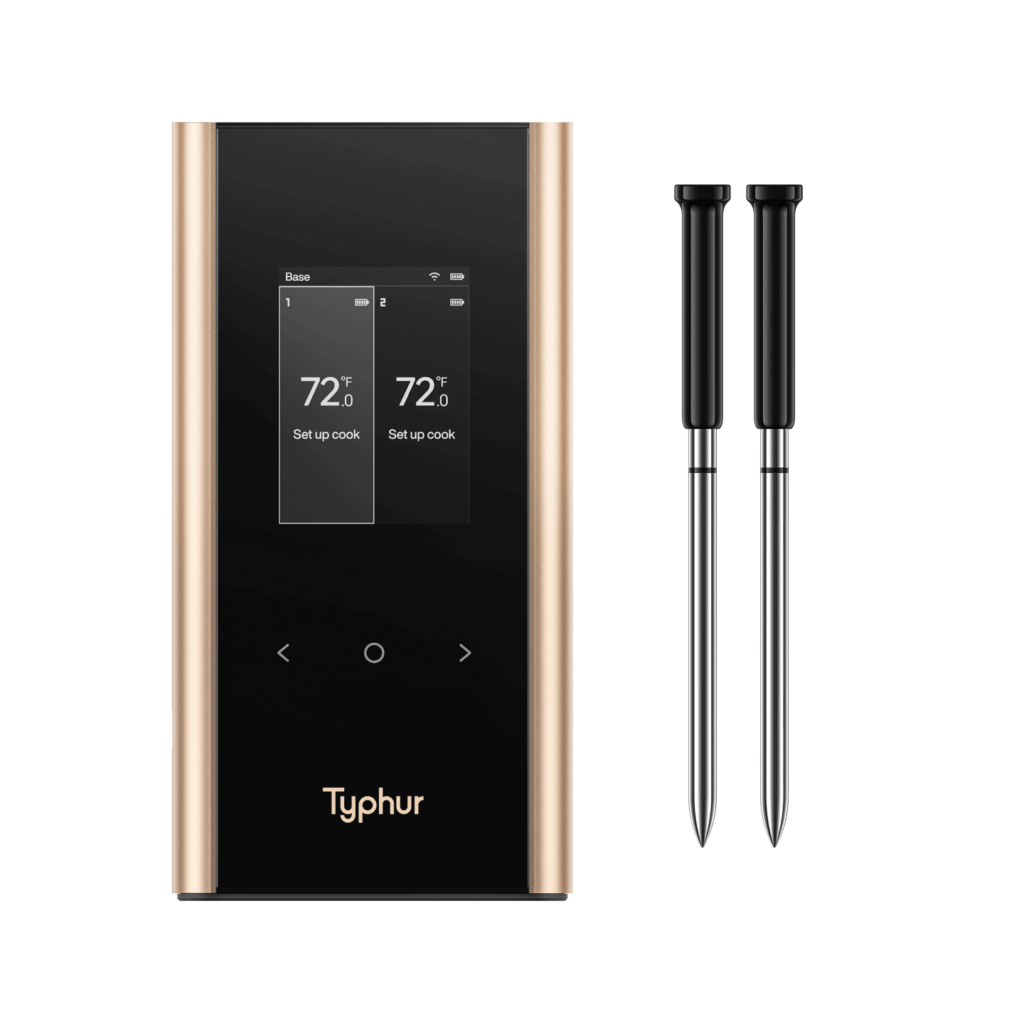
Long Range Wireless Meat Thermometer
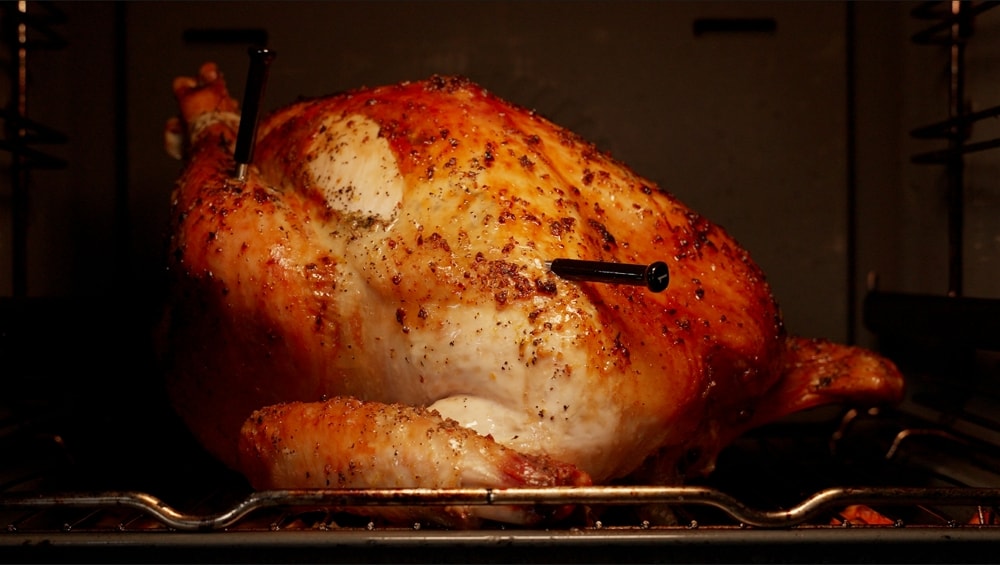
Basics to Roasting a Turkey
1. What Size Turkey to Buy?
This is the big question, right? You don’t want to be short on turkey, but you also don’t want to be swimming in leftovers for days (well, unless that’s the plan!). The general rule I follow is about 1 to 1.5 pounds per person. So, if you’re hosting 10 people, a 12-15 pound turkey is perfect. Planning for hearty eaters or hoping for leftovers? Go on the larger side.
2. Don’t Forget to Thaw the Turkey
Now, if you’re like me, this is the part that’s easy to overlook—and you don’t want to be frantically thawing a frozen bird on Thanksgiving morning. Here’s the golden rule: 24 hours in the fridge for every 5-6 pounds of turkey. So, if you’ve got a 20-pound turkey, start thawing it four days before Thanksgiving. I can’t stress this enough because a fully thawed turkey cooks so much more evenly and saves you a ton of stress!
Wondering if your turkey is fully thawed? Insert the Typhur InstaProbe instant read thermometer through the wrapper and deep into the breast in several spots. If it reads between 30°F (-1.1°C) and 40°F (4.4°C), your turkey is good to go.
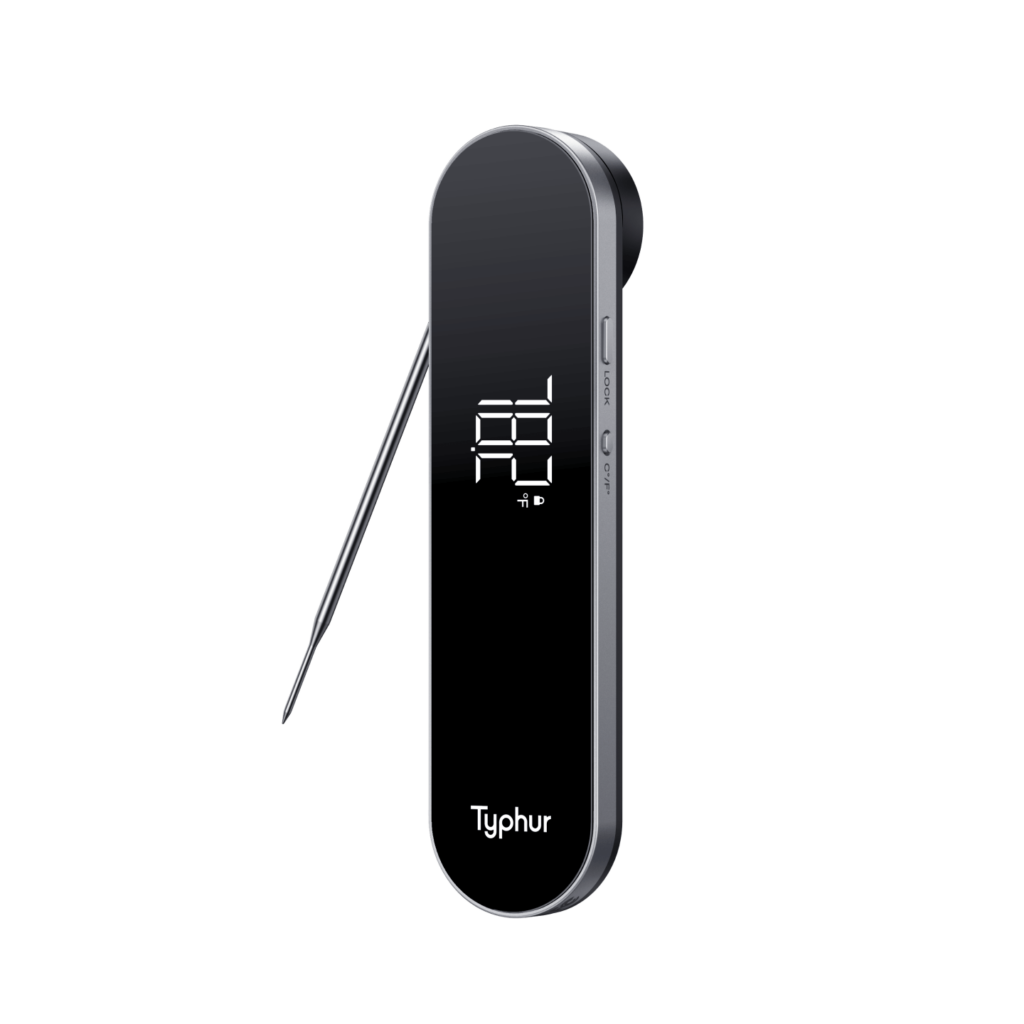
Instant Read Meat Thermometer
3. Don’t Wash the Turkey
I know, I know—washing the turkey feels like the right thing to do. But trust me on this, you can skip it. Washing poultry spreads bacteria around the kitchen, which we definitely don’t want before a big meal! Any bacteria on the turkey will be killed in the oven, so just pat it dry with paper towels and move on.
4. How Long to Cook a Turkey
The cooking time depends on the bird’s size, but here’s a handy rule: about 15 minutes per pound at 325°F for an unstuffed turkey. A 12-pound bird, for example, will take roughly 3 hours. But remember, the BEST gauge is the temperature, not the clock!
You want the turkey to reach 156°F (Not 165°F) in the thickest part of the breast for safe and juicy meat. So start checking early to avoid overcooking, and let the thermometer be your guide.
5. Always Use a Thermometer to Check Turkey’s Doneness
This step is non-negotiable! A meat thermometer is your best friend for achieving a juicy, perfectly cooked turkey. With the Typhur Sync Gold wireless meat thermometer, you can monitor the temperature in the thickest part of the breast. Just set an alarm for a target temp of 156°F. You will receive the alert once the turkey reaches the target temp.
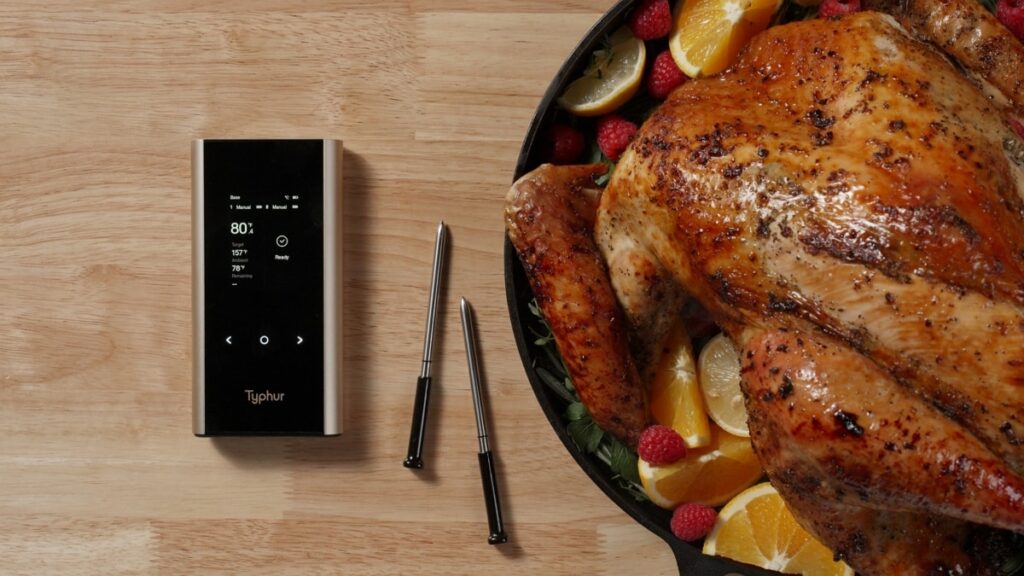
6. Always Let Your Turkey Rest
Resist the urge to dig in right away! Once your turkey comes out of the oven, let it rest for at least 20 minutes. This gives the juices time to redistribute, which makes a world of difference in keeping the meat juicy. I promise, the wait is worth it.
7. Do Save the Turkey Drippings
Don’t toss those glorious drippings! They’re pure flavor gold for gravy. Just pour them off into a heat-safe container and let them sit so the fat rises to the top—then you’re ready to make the most delicious gravy to go with your turkey.
Ingredients for Roasted Turkey
- Thawed turkey: The main event! Make sure it’s fully thawed, or cooking it will be a struggle.
- Yellow onion, celery, and carrot: These add amazing aroma and moisture as they roast underneath the turkey.
- Oranges and apples: Oranges and apples are tucked into the cavity to infuse the turkey with a subtle sweetness and keep it juicy as it roasts.
- Fresh thyme: Just a few sprigs make the entire kitchen smell heavenly.
- Kosher salt and crushed black pepper: Essential for bringing out the natural flavors of the turkey and adding a perfect, simple seasoning.
- Homemade herb butter: I make my homemade herb butter with unsalted butter, chopped fresh thyme, a touch of orange zest, kosher salt, crushed black pepper, and minced garlic to give the turkey a rich, aromatic flavor.
How to Cook a Turkey
Trim any excess fat, sprinkle salt and pepper inside the cavity, and then stuff it with sliced oranges, apples, onions, and a few sprigs of thyme. Fold the wing tips back and tie the legs with kitchen string to keep everything in place.
Then, grab a piping bag (or just use your hands) and spread the herb butter under the skin, focusing on the breast and legs. This step locks in moisture and flavor while helping the skin crisp up beautifully. Use the remaining butter to coat the outside of the bird.
Place extra onions, celery, and carrots in your roasting pan to form a cozy bed for the turkey. If you have a turkey rack, set it on top of the veggies. If not, no worries—just crumple some foil to lift the bird up a bit.
This is where the Typhur Sync Gold dual probe wireless meat thermometer comes in handy. Insert one probe into the thickest part of the breast and the other into the thigh. Using the Typhur app, set an alarm for 156°F (69°C) for the breast and 175°F (79°C) for the thigh. This way, you’ll get a notification when it’s cooked to perfection!
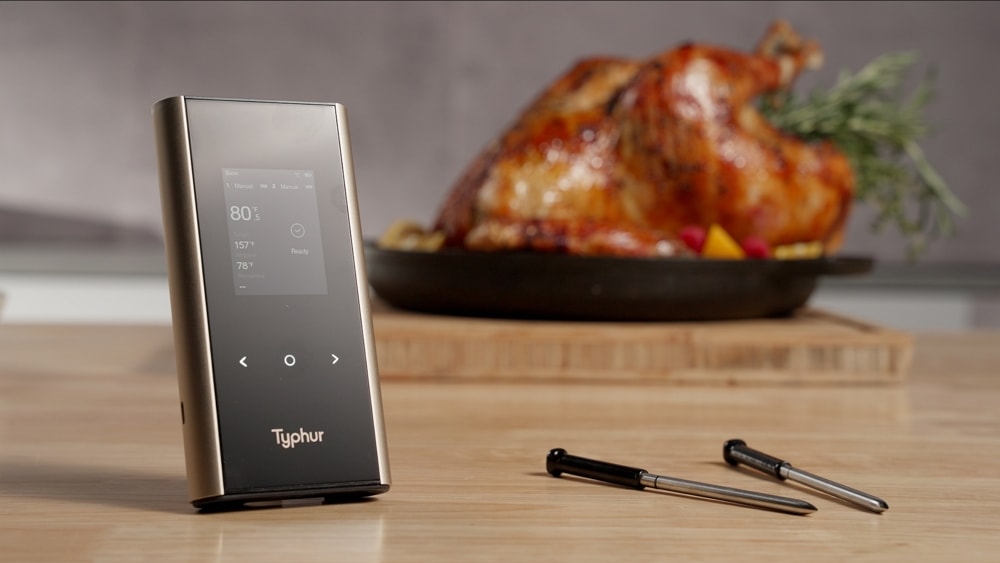
Place the pan with the turkey in your preheated oven. The Typhur Sync will alert you once the turkey breast reaches 151°F—just the right time to pull it out so the final temp reaches 156°F as it rests.
Once your turkey is out of the oven, let it rest for at least 20 minutes. This lets the juices settle, giving you the moistest, most flavorful turkey possible. Carefully remove the thermometer probes, carve it up, and serve with all your favorite sides.
Common Questions
Roasting is a classic, go-to method that works well, especially if you spatchcock the turkey, which helps it cook evenly and faster. Spatchcocking involves removing the backbone and flattening the bird, which promotes more even cooking of both white and dark meat. Another option is slow roasting at a lower temperature for longer, which helps keep the turkey juicy but does take a bit more time.
The ideal approach is to cook the turkey to 156°F in the breast, which keeps the breast meat moist and prevents overcooking. Cooking the dark meat (thighs) to 175°F ensures the connective tissues break down for tender, juicy dark meat.
For that perfect crispy skin, dry out the skin before roasting. After brining, let the turkey sit uncovered in the fridge for a few hours (or overnight) to allow the skin to dry out. When ready to cook, rub the skin with oil or butter. Roasting at a higher temperature at the start or end of cooking (like 425°F for the first 30 minutes or last 15 minutes) also helps achieve that crispy, golden skin.
More Thanksgiving Dinner Ideas
While turkey is the star of the show, a well-rounded dinner needs side dishes, desserts, and maybe even a unique twist or two to truly shine. If you’re looking to expand your menu this year, here are some crowd-pleasing ideas that will take your Thanksgiving dinner to the next level.
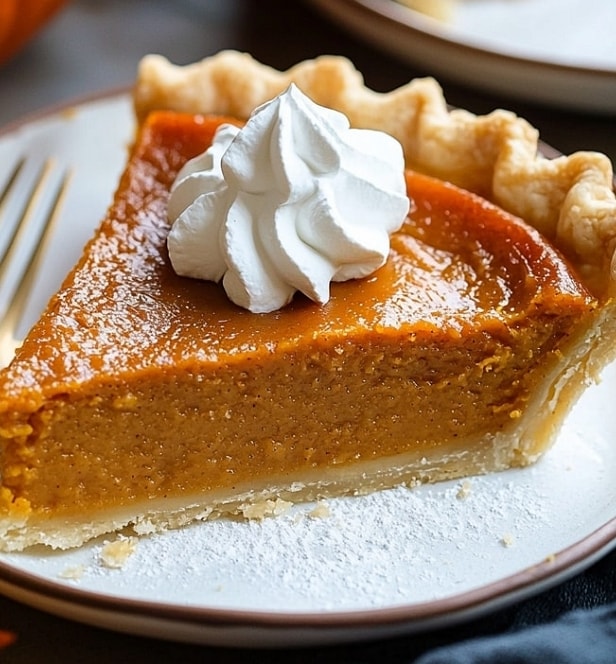
Pumpkin pie
Pumpkin pie with whipped cream is a Thanksgiving staple that never disappoints.
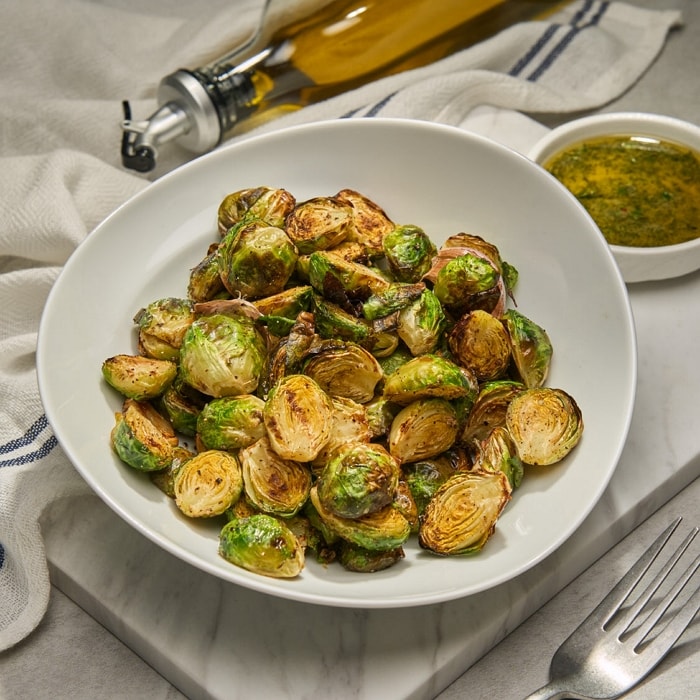
Roasted Brussels Sprouts
These roasted Brussels sprouts are crispy on the outside, tender on the inside, and packed with flavor. They’re the perfect side dish for any meal.
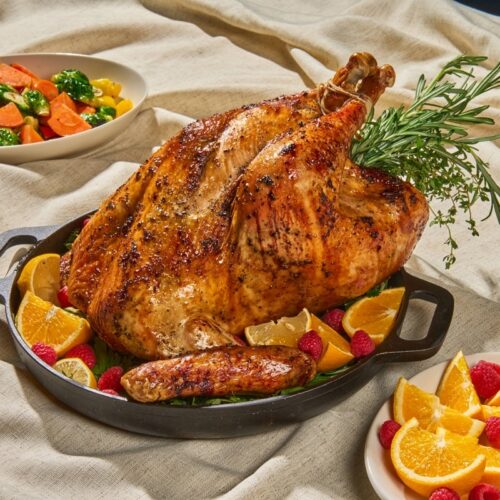
Best Turkey Recipe
Video
Equipment
- Oven Gloves
- Chef Knife
- Mixing Bowl
- Tray
Ingredients
For the Turkey
- 1 thawed turkey bird (15 lbs)
- 2 yellow onion cut into chucks
- 180 g celery cut into chucks
- 180 g carrot cut into chucks
- 2 oranges cut into chunks
- 1 apple cut into chunks
- 3 sprigs fresh thyme
- 2 tbsp kosher salt
- 2 tbsp crushed black pepper
For the herb butter
- 227 g unsalted butter at room temperature
- 3 tbsp fresh thyme chopped
- 2 orange zest
- 2 tbsp kosher salt
- 1 tbsp crushed black pepper
- 5 garlic clove minced
Instructions
- Thaw the turkey in the refrigerator ahead. It usually takes 24 hours per 4-5 lbs, until no part of the bird is colder than 30°F (-1°C). Remove turkey from packaging and pat dry with kitchen paper. Place the turkey on a baking sheet and refrigerate to dry overnight (at least 4 hours for crispy skin).
- Preheat the Oven. Preheat the oven to 355℉/180℃.
- Go to preparing butter. Prepare a bowl, add butter, orange or lemon zest, thyme, minced garlic, salt and pepper and stir well. Set aside.
- Preparing turkey. Use a knife to remove excess fat and skin, sprinkle salt and pepper into the turkey belly, and stuff the turkey belly with sliced oranges, apples, onions, and thyme.
- Tie the turkey. Fold the turkey wing tips to the back and tie the turkey legs with string.
- Season the turkey. Use a piping bag to evenly spread spiced butter under the skin of the breast and legs—this helps achieve a crispier skin. Then, coat the entire turkey with any remaining butter.
- Preparation before Roasting. Place the extra onions, celery, and carrots in a baking dish and place the turkey on top of the vegetables (use a turkey rack if you have one, if not you can make a simple rack out of tinfoil).
- Place the meat thermometer in the turkey. We need to monitor the temp of the turkey breast and the leg, so using the Typhur Sync Gold dual probe wireless meat thermometer is perfect for this. Simply insert one thermometer probe into the thickest part of the turkey breast, and the other into the leg, making sure the safety line is fully covered.In the Typhur App, set the alarm by selecting:1. Poultry → Turkey → Breast, with a target temp of 156°F (69°C).2. Poultry → Turkey → Leg, with a target temp of 175°F (79°C).To begin the process, press the start button on your phone.Or you can set it up directly via the device base.
- Roast the turkey. Place the baking sheet with the turkey in the oven. You will be notified when the turkey is ready to pull out. (Use the target temperature of the turkey breast as your reference temperature.)
- Remove the turkey from the oven. Using a pair of oven gloves, carefully remove the tray with the turkey and transfer it to a heat-resistant surface. Let the turkey rest for at least 20 minutes. (The internal temperature will continue to rise.)
- Carefully remove the probes. Serve this juicy turkey with any of your favorite side dishes.
Nutrition PER SERVING
(Nutrition information is calculated automatically by Spoonacular API and should be considered an estimate.)



